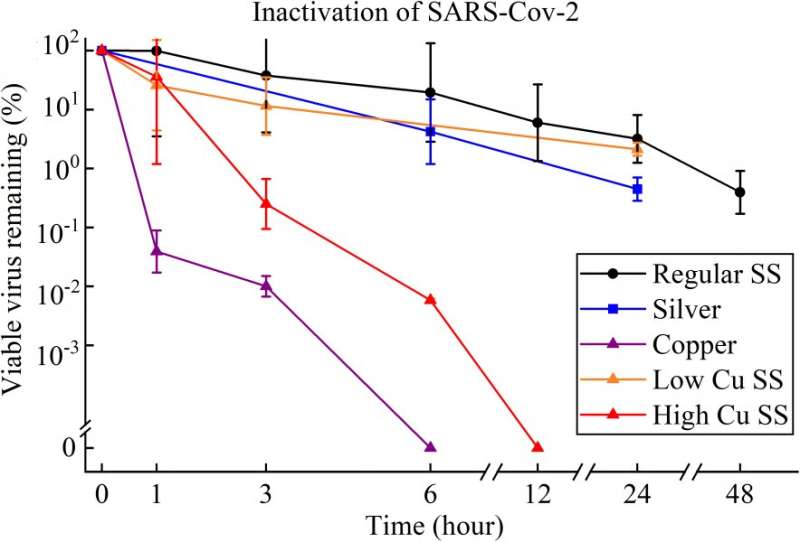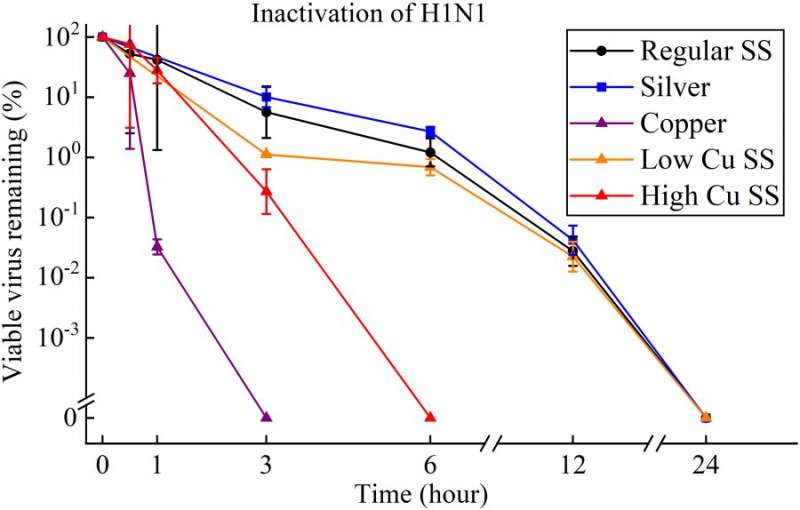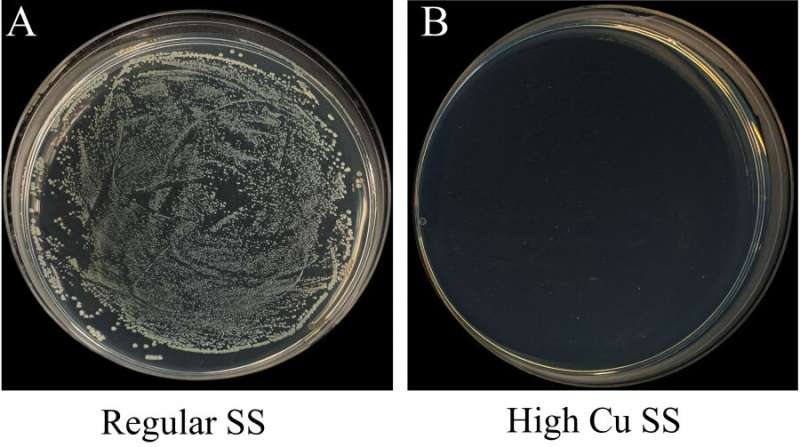Figure 1. Viability of the SARS-Cov-2 on the surfaces of various metals (each point is the average value of three measurements). Credit: The University of Hong Kong
The team led by Professor Mingxin HUANG at the Department of Mechanical Engineering of the Faculty of Engineering of the University of Hong Kong (HKU), in collaboration with Professor Leo Lit Man POON's research team at the Centre for Immunity and Infection of the LKS Faculty of Medicine of HKU, has made significant breakthroughs in producing the first anti-COVID-19 stainless steel that kills the severe acute respiratory syndrome coronavirus 2 (SARS-Cov-2) on its surface. The anti-COVID-19 stainless steel can also inactivate the H1N1 virus and E.coli on its surface.
The findings were published in the Chemical Engineering Journal on 25 November 2021 in a paper titled "Anti-pathogen stainless steel combating COVID-19."
Stainless steel is one of the most extensively used materials in many public areas and hygiene facilities but has no inherent antimicrobial properties. Additionally, the SARS-CoV-2 exhibits strong stability on regular stainless steel surfaces, with viable viruses detected even after three days. Undoubtedly, this has created a high possibility of virus transmission among people using these areas and facilities.
"In this latest breakthrough, the inactivation of pathogen microbes (especially the SARS-CoV-2) on stainless steel surface is achieved by tuning the chemical composition and microstructure of regular stainless steel. The breakthrough also found interesting points about Ag and Cu as the allying elements to prepare anti-pathogen stainless steel (Fig. 1–3). Pathogen viruses like H1N1 and SARS-CoV-2 exhibit good stability on the surface of pure Ag and Cu-contained stainless steel of low Cu content (e.g., ≤ 5wt%) but are rapidly inactivated on the surface of pure Cu and Cu-contained stainless steel of high Cu content (e.g., ≥ 10 wt%)," Professor Mingxin Huang said.
-
Figure 2. Viability of H1N1 on the surfaces of various metals (each point is the average value of three measurements). Credit: The University of Hong Kong
-
Figure 3. Photos of typical bacterial colonies on A) regular SS and B) the high Cu SS (20 wt%). Credit: The University of Hong Kong
-
Figure 4. Lift buttons made from the high Cu SS (20 wt%) by PM technology. Credit: The University of Hong Kong
A patent (Patent Cooperation Treaty (PCT) type) has been filed for the research findings. The team has been liaising with industrial partners to generate prototypes of public stainless steel products such as lift buttons, doorknobs, and handrails for further tests and trials. For initial demonstration purposes, "floor buttons" used in lifts were fabricated successfully using the high Cu stainless steel (20 wt%) (Fig. 4).
"Massive Cu-rich precipitates are permanently present in the stainless steel matrix. Thus, this anti-COVID-19 stainless steel can chronically inactivate pathogen microbes even though its surface is continuously damaged," said Mr. Litao LIU, the first author of the journal article and a Ph.D. student supervised by Professor Huang.
"The present anti-COVID-19 stainless steel can be mass produced using existing mature technologies. They can replace some of the frequently touched stainless steel products in public areas to reduce the risk of accidental infection and fight the COVID-19 pandemic," Professor Huang added.
More information: L.T. Liu et al, Anti-pathogen stainless steel combating COVID-19, Chemical Engineering Journal (2021). DOI: 10.1016/j.cej.2021.133783
Provided by The University of Hong Kong



























